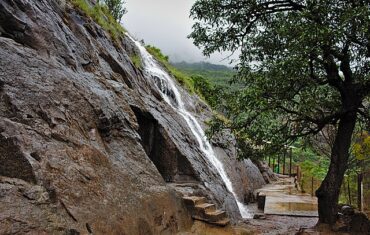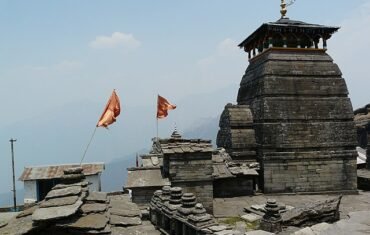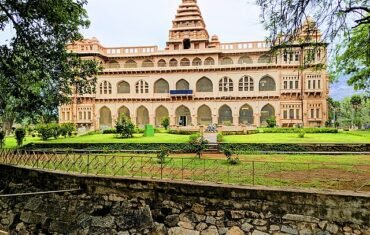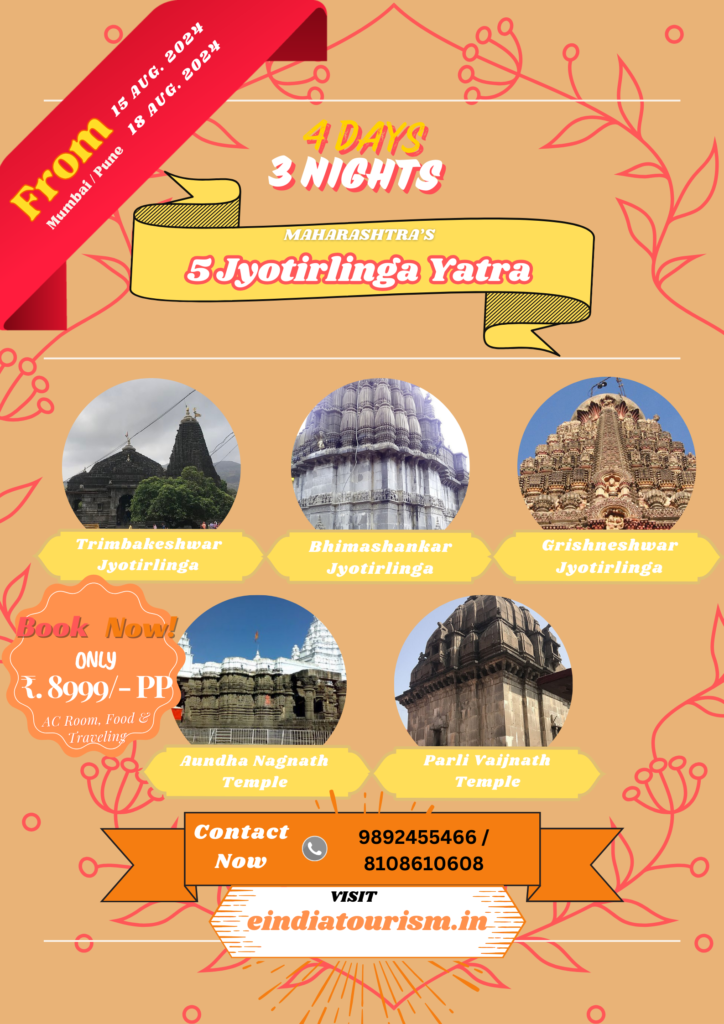Pushkar Ropeway in Pushkar, Pushkar is a small town in Rajasthan, India, is known for its religious and spiritual significance. It is home to over 500 temples, many of which are ancient and have a rich history. But one of the most famous and important temples in Pushkar is the Savitri Mata Temple, which is dedicated to the Hindu goddess of wisdom and learning, Savitri. Visit during One day Jaipur To Ajmer-Pushkar Trip By Private cab
This temple is located on the Ratnagiri hill, which is a popular pilgrimage site for the Hindus. However, reaching the temple by climbing 970 steps can be a strenuous and tiring task for many pilgrims, especially the elderly and the disabled. To solve this problem, a new ropeway system has been introduced in Pushkar, which provides a convenient and scenic way to reach the Savitri Mata Temple. In this article, we will explore the overview, location, timing/entry fees, how to reach, things to do/must see, significance, FAQ’s and conclusion of this ropeway.
Table of Contents
Overview of Pushkar Ropeway
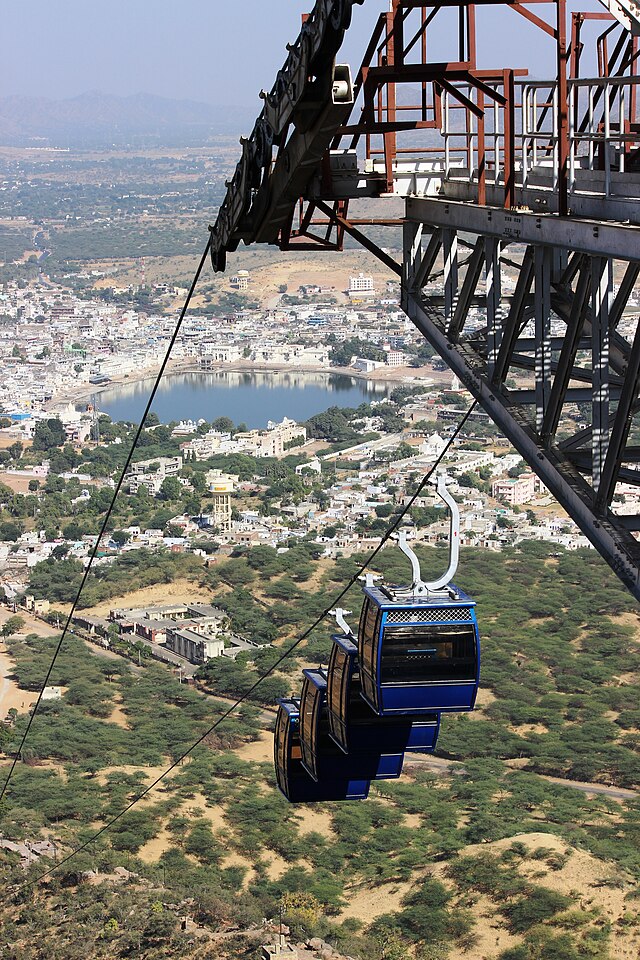
The Pushkar Ropeway, also known as Savitri Mata Ropeway, is a passenger ropeway system that connects the base station near the Pushkar railway station to the hilltop station near the Savitri Mata Temple. The ropeway was inaugurated in 2017 by Damodar Ropeways & Infra Limited (DRIL), a company that specializes in building passenger ropeways, material ropeways and ski-lifts. The ropeway has a capacity of 6 persons per cabin and can carry up to 800 passengers per hour.
The ropeway covers a distance of 720 meters and takes about 6 minutes for a round trip journey. The ropeway offers a bird’s eye view of the Pushkar Lake and the town below, as well as panoramic views of the Aravalli hills and the desert.
Location of Pushkar Ropeway

The Pushkar Ropeway is located in Pushkar town, which is about 10 km northwest of Ajmer city in Rajasthan state. Pushkar town is one of the oldest towns in India and has a rich history and heritage. It is also known as the “City of Temples” or “Tirth Raj” (the king of pilgrimage sites). Pushkar town is situated at an elevation of 530 meters above sea level and has a pleasant climate throughout the year.
Timing/Entry Fees Pushkar Ropeway
The Pushkar Ropeway is open for visitors every day from 9:00 AM to 6:00 PM. The prices of a round trip journey (inclusive of taxes) are as follows:
- Differently abled person: Rs 125
- Children up to 3 years: Nil
- Children above 3 years: Rs 165
- Children above 3 years (Mata Mandir to Lower Ropeway station): Rs 100
There is no entry fee for visiting the Savitri Mata Temple.
How to Reach Pushkar Ropeway

The nearest airport to Pushkar is Jaipur International Airport, which is about 150 km away from Pushkar. From there, one can take a taxi or a bus to reach Pushkar. The nearest railway station to Pushkar is Ajmer Junction Railway Station, which is about 10 km away from Pushkar. From there, one can take a taxi or an auto-rickshaw to reach Pushkar. There are also regular buses available from Ajmer to Pushkar. Alternatively, one can also drive to Pushkar by taking the National Highway 48 or 58.
To reach the Pushkar Ropeway from Pushkar town, one can either walk for about 2 km or take an auto-rickshaw or a cycle-rickshaw for about Rs.20-30 per person.
Things to Do/Must See Pushkar Ropeway

Apart from visiting the Savitri Mata Temple by the Pushkar Ropeway, there are many other things to do and see in Pushkar. Some of them are:
- Take a dip in the holy Pushkar Lake, which is believed to have been created by Brahma himself. The lake has 52 ghats (steps) where pilgrims can bathe and perform rituals. The lake also has many temples and shrines around it.
- Visit other temples in Pushkar, such as Brahma Temple (dedicated to Brahma), Varaha Temple (dedicated to Vishnu’s boar incarnation), Rangji Temple (dedicated to Ranganatha), Apteshwar Temple (dedicated to Shiva), and many more.
- Enjoy the annual Pushkar Fair or Camel Fair, which is held in November every year along with the Kartik Poornima festival. It is one of the largest and most colorful fairs in India, where thousands of camels, horses, cattle and other animals are traded and exhibited. The fair also features cultural events, competitions, folk dances, music and handicrafts.
- Explore the local markets and shops in Pushkar, where one can buy souvenirs, handicrafts, jewelry, clothes, books and more. One can also try the local cuisine, such as dal bati churma, malpua, kachori, lassi and more.
- Experience the spiritual and cultural vibe of Pushkar, which is known for its ashrams, yoga centers, meditation camps and festivals. One can also interact with the local people, who are friendly and hospitable.
Significance of Pushkar Ropeway
The Pushkar Ropeway is significant for many reasons. Some of them are:
- It is a convenient and scenic way to reach the Savitri Mata Temple, which is one of the most sacred and revered pilgrimage sites for Hindus. The temple is dedicated to Savitri, the goddess of wisdom and learning, who is also the first wife of Brahma. The temple is also associated with the legend of Brahma’s yagna (sacrifice) and his curse from his first wife Savitri (Saraswati).
- It is also a way to promote tourism and development in Pushkar, which is a town full of temples, festivals, fairs and markets. The ropeway attracts tourists who admire its unique architecture and beauty. The ropeway also provides employment opportunities for the local people.
- It is also a way to preserve the environment and heritage of Pushkar, which is a town surrounded by deserts and hills. The ropeway reduces the carbon footprint and noise pollution caused by vehicles. The ropeway also respects the sanctity and serenity of the temple and the lake.
FAQ’s
Q: Why is Pushkar Ropeway considered to be a good medium to reach the Savitri Mata Temple?
A: Pushkar Ropeway is considered to be a good medium to reach the Savitri Mata Temple because it saves the pilgrims from the strenuous stiff climb of little more than 1100 steps and enables all pilgrims particularly old and disabled devotees to visit the holy temple in less than 6 minutes. It also provides a bird’s eye view of the Pushkar Lake and the town below, as well as panoramic views of the Aravalli hills and the desert.
Q: What are the safety measures taken by the Pushkar Ropeway?
The ropeway has been designed and constructed by Damodar Ropeways & Infra Limited (DRIL), a company that has been a pioneer in the construction business since 1974.
The ropeway has been certified by various national and international agencies such as Bureau of Indian Standards (BIS), International Organization for Standardization (ISO), International Association of Amusement Parks and Attractions (IAAPA), etc.
The ropeway has a backup generator system in case of power failure.
The ropeway has trained staff and security personnel who monitor and operate the ropeway.
The ropeway has emergency phones and fire extinguishers in each cabin.
Q: What are the rules and regulations for visiting the Pushkar Ropeway?
A: The rules and regulations for visiting the Pushkar Ropeway are:
One has to buy a ticket before boarding the ropeway.
One has to follow the instructions of the staff and security personnel.
One has to dress modestly and respectfully, covering their shoulders and knees.
One has to refrain from smoking, drinking or eating inside the ropeway.
One has to refrain from taking photographs or videos inside the ropeway.
Conclusion
The Pushkar Ropeway is a convenient and scenic way to reach the Savitri Mata Temple in Pushkar, which is one of the most sacred and revered pilgrimage sites for Hindus. The ropeway is also a way to promote tourism and development in Pushkar, which is a town full of temples, festivals, fairs and markets. The ropeway is also a way to preserve the environment and heritage of Pushkar, which is a town surrounded by deserts and hills. Visiting the Pushkar Ropeway is a once-in-a-lifetime opportunity that should not be missed by anyone who wants to explore the essence of Hinduism.


